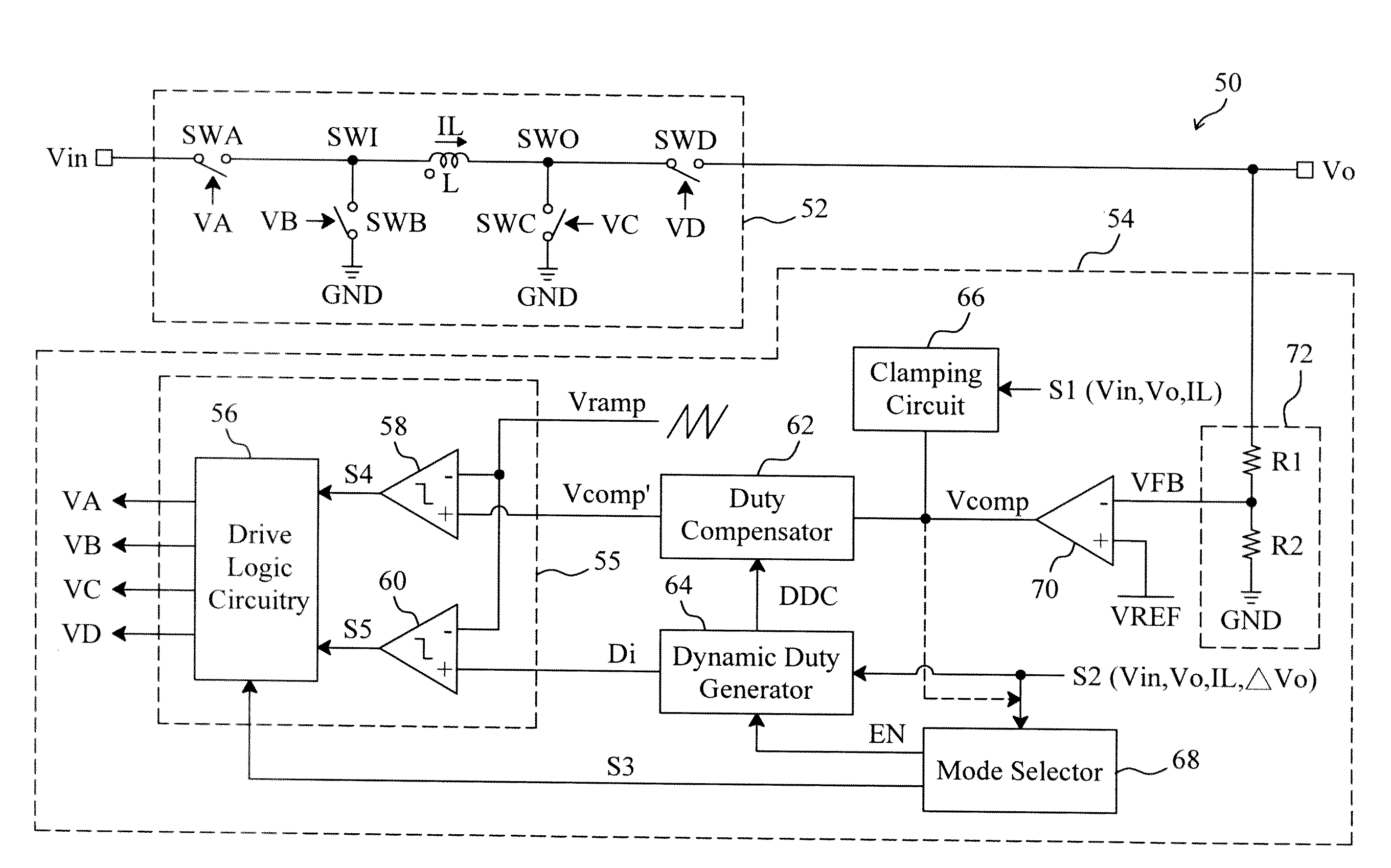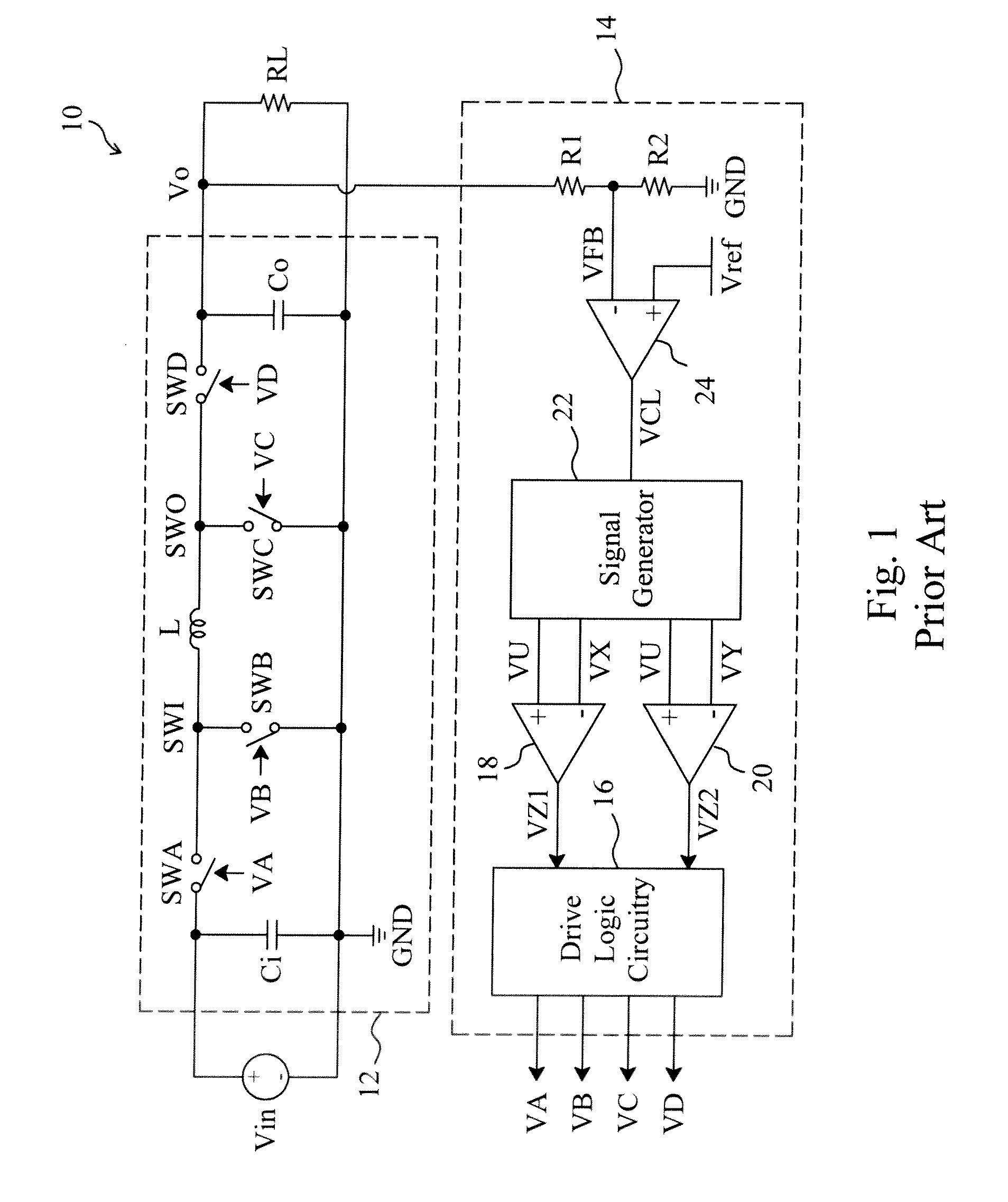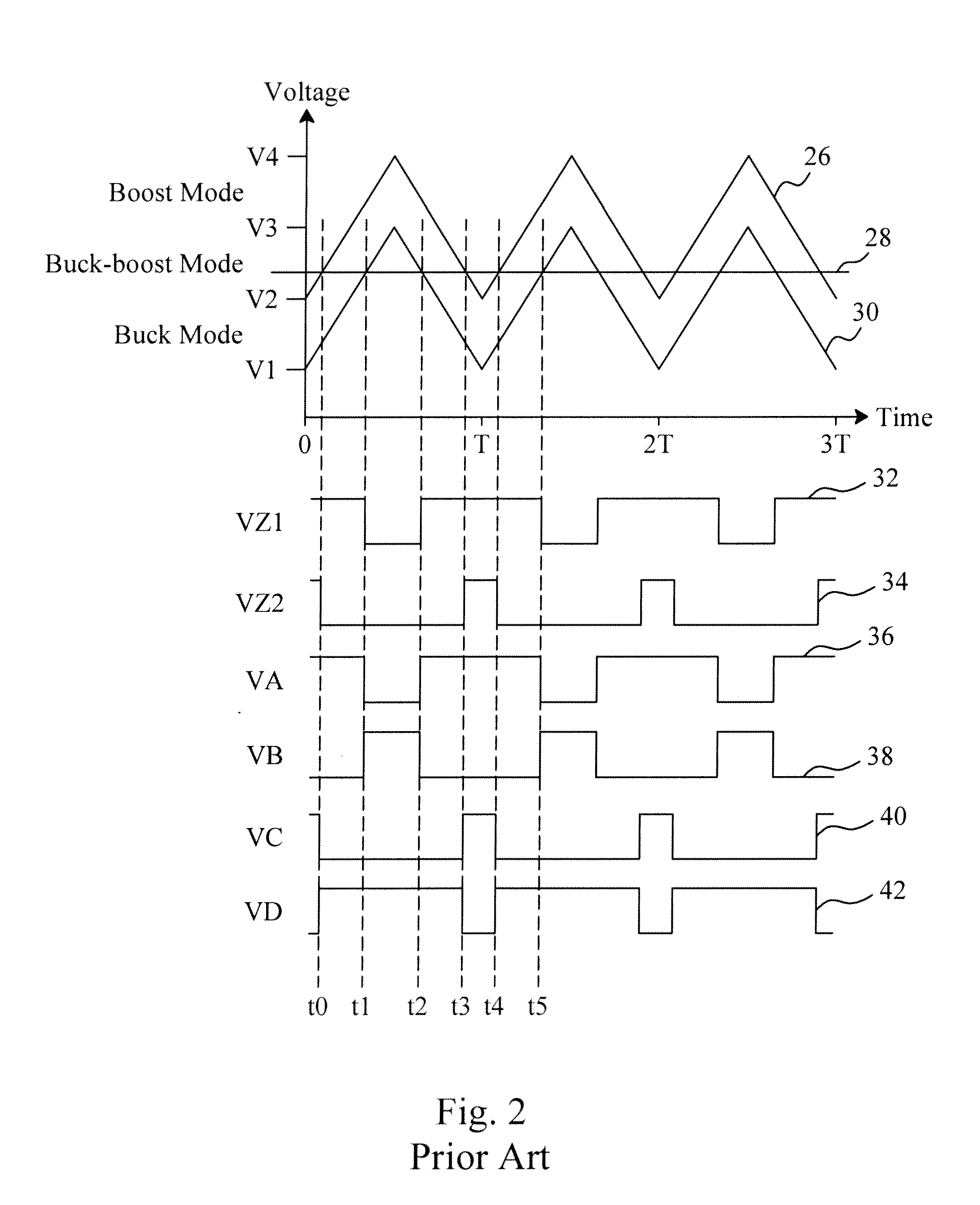Control circuit and method for a buck-boost power converter
- Summary
- Abstract
- Description
- Claims
- Application Information
AI Technical Summary
Benefits of technology
Problems solved by technology
Method used
Image
Examples
Embodiment Construction
[0030]In an embodiment according to the present invention, as shown in FIG. 3, a buck-boost power converter 50 includes a buck-boost power stage 52 and a control circuit 54 to provide control signals VA, VB, VC and VD to switch the power switches SWA, SWB, SWC and SWD connected to an inductor L in the buck-boost power stage 52 to convert an input voltage Vin to an output voltage Vo. In the control circuit 54, a feedback circuit 72 detects the output voltage Vo to generate a feedback signal VFB, an error amplifier 70 amplifies the difference between the feedback signal VFB and a reference voltage VREF to generate an error signal Vcomp, a clamping circuit 66 clamps the level of the error signal Vcomp according to a detecting signal S1 related to at least one of the input voltage Vin, output voltage Vo and inductor current IL, a mode selector 68 generates a mode switch signal S3 according to a detecting signal S2 related to at least one of the input voltage Vin, output voltage Vo, indu...
PUM
 Login to View More
Login to View More Abstract
Description
Claims
Application Information
 Login to View More
Login to View More - R&D
- Intellectual Property
- Life Sciences
- Materials
- Tech Scout
- Unparalleled Data Quality
- Higher Quality Content
- 60% Fewer Hallucinations
Browse by: Latest US Patents, China's latest patents, Technical Efficacy Thesaurus, Application Domain, Technology Topic, Popular Technical Reports.
© 2025 PatSnap. All rights reserved.Legal|Privacy policy|Modern Slavery Act Transparency Statement|Sitemap|About US| Contact US: help@patsnap.com



